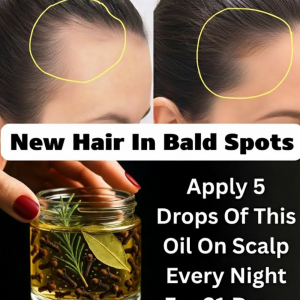
Nail fungus can be stubborn, unsightly, and frustrating. It often causes yellow, thick, or brittle nails and thrives in warm, moist environments — especially in closed shoes or shared spaces like pools or gyms.
Luckily, there’s a natural remedy that’s affordable, safe, and surprisingly effective: white vinegar.
Here’s how to use it — and what else you should do to get the best results.
1. Clean your nails thoroughly before applying anything

Always wash your feet or hands with soap and water, and dry them completely. Fungus loves moisture, so starting with a clean, dry surface is essential.
2. Apply pure white vinegar with a cotton swab

Dip a clean cotton swab in white vinegar and apply it directly to the affected nail, especially along the edges and thickest areas. Do this twice a day — morning and night.
3. Be patient and consistent
Nail fungus doesn’t disappear overnight. Stick to the routine daily for at least 4–6 weeks. Consistency is key to success with natural remedies.
4. Avoid touching irritated skin

If the skin around your nail is sensitive or broken, avoid direct contact with undiluted vinegar. You can dilute it with a little water (1:1 ratio) before applying.
5. Don’t reuse cotton or tools
Use fresh cotton swabs each time, and disinfect nail clippers after every use to prevent spreading the fungus.
6. Let your nails breathe
Avoid using nail polish or acrylic nails while treating a fungal infection. These can trap moisture and worsen the condition.
7. Trim your nails regularly

Keep infected nails short to reduce pressure and allow the vinegar to reach deeper layers more easily.
8. Keep socks and shoes clean
Change socks daily, wear breathable shoes, and avoid tight or sweaty footwear. Wash your shoes or use antifungal sprays when possible.
9. Protect your feet in public areas
Wear flip-flops in shared showers, locker rooms, and swimming pools to reduce the risk of re-infection.
10. Support your immune system
Eat a balanced diet rich in vitamins and antioxidants. A healthy immune system helps your body fight off fungal infections more effectively.
Reminder: When to See a Doctor

If the infection spreads, becomes painful, or doesn’t improve after a few months, it’s best to consult a healthcare professional. White vinegar is helpful for mild to moderate cases — but persistent or severe fungal infections may require prescription treatment.
With patience and the right habits, nail fungus can be managed naturally and affordably — starting right at home.




